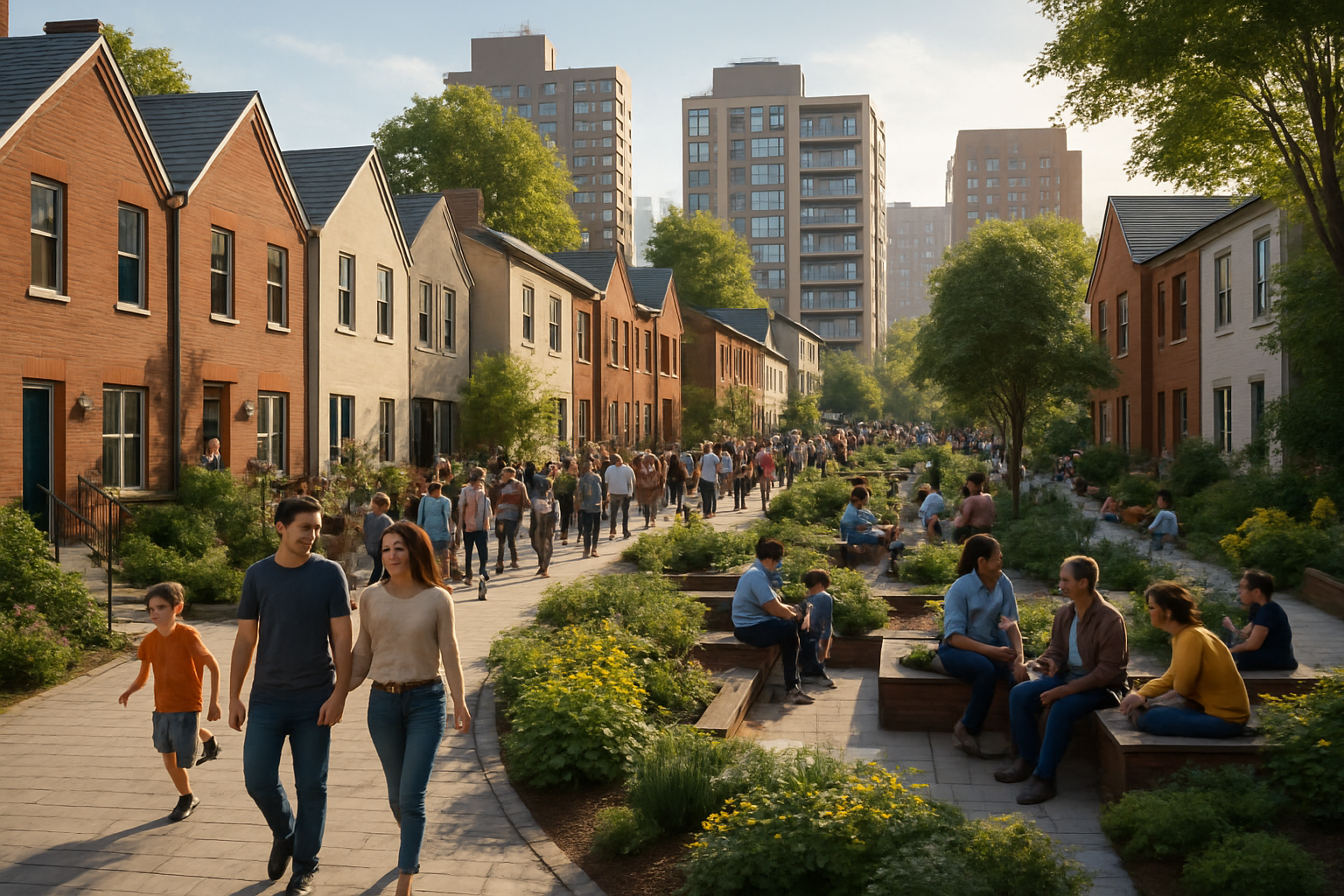Slow Urbanism: Embracing Mindful City Living
The fast-paced urban grind is giving way to a new paradigm of city life. Slow Urbanism, a burgeoning movement, champions intentional living and human-centered design in metropolitan spaces. This philosophy reshapes our understanding of urban environments, prioritizing quality of life over relentless growth. Read below to explore how Slow Urbanism is transforming cityscapes and fostering more livable communities.

Origins and Principles of Slow Urbanism
The concept of Slow Urbanism draws inspiration from the Slow Food movement, which began in Italy in the 1980s as a response to the proliferation of fast food culture. Similarly, Slow Urbanism emerged as a counterpoint to the rapid, often chaotic urban development that characterized many cities in the late 20th and early 21st centuries. Proponents of this approach argue that cities should be designed and developed with careful consideration of human needs, environmental sustainability, and long-term livability.
At its core, Slow Urbanism emphasizes several key principles: prioritizing pedestrian-friendly spaces, promoting mixed-use developments, preserving local character and heritage, encouraging community engagement in urban planning, and fostering a sense of place. These principles aim to create urban environments that are not just efficient, but also enjoyable and nurturing for their inhabitants.
Reimagining Urban Spaces for Human Well-being
One of the central tenets of Slow Urbanism is the creation of spaces that promote human well-being and social interaction. This approach often involves the development of public squares, parks, and community gardens that serve as gathering places for residents. These spaces are designed to encourage face-to-face interactions, fostering a sense of community that is often lacking in traditional urban environments.
Moreover, Slow Urbanism advocates for a more balanced approach to transportation, prioritizing walking, cycling, and public transit over car-centric design. This shift not only reduces traffic congestion and air pollution but also promotes physical activity and social engagement among city dwellers. By creating pedestrian-friendly streetscapes and extensive bike lane networks, cities can become more accessible and enjoyable for all residents.
Preserving Local Character in a Globalized World
In an era of increasing globalization, many cities risk losing their unique identities to homogeneous development. Slow Urbanism pushes back against this trend by emphasizing the preservation and celebration of local character. This approach involves protecting historic buildings, supporting local businesses, and incorporating elements of local culture and tradition into new developments.
By maintaining a strong sense of place, cities can offer residents and visitors alike a more authentic and enriching experience. This focus on local character not only enhances the quality of life for residents but also contributes to the economic vitality of cities by creating distinctive destinations that attract tourism and investment.
Sustainable Development and Environmental Consciousness
Sustainability is a key component of the Slow Urbanism philosophy. This movement recognizes the urgent need to address environmental challenges and promotes urban development that minimizes ecological impact. Strategies include green building practices, the integration of urban agriculture, and the implementation of efficient waste management systems.
Furthermore, Slow Urbanism encourages the adaptive reuse of existing structures rather than constant new construction. This approach not only preserves the character of neighborhoods but also reduces the environmental footprint of urban development. By prioritizing sustainability, cities can become more resilient in the face of climate change and other environmental challenges.
Community Engagement and Participatory Planning
A cornerstone of Slow Urbanism is the belief that citizens should have a voice in shaping their urban environments. This philosophy advocates for participatory planning processes that involve residents in decision-making about their neighborhoods and cities. By engaging community members in urban design and development, cities can create spaces that truly reflect the needs and desires of their inhabitants.
This approach often involves community workshops, public consultations, and collaborative design processes. By fostering a sense of ownership and involvement among residents, Slow Urbanism aims to create more cohesive and satisfied urban communities.
Challenges and Criticisms of Slow Urbanism
While Slow Urbanism offers many potential benefits, it is not without its challenges and critics. One major concern is the potential for this approach to exacerbate gentrification, as the creation of more livable and attractive urban spaces can lead to increased property values and displacement of long-time residents. Balancing the goals of urban improvement with social equity remains a significant challenge for proponents of Slow Urbanism.
Additionally, some argue that the slower pace of development advocated by this movement may not be sufficient to address pressing urban issues such as housing shortages and rapid population growth. Critics contend that cities need to be able to adapt quickly to changing circumstances and that a slower approach to urban development may hinder necessary progress.
The Future of Urban Living
As cities around the world grapple with issues of sustainability, livability, and community cohesion, the principles of Slow Urbanism are gaining traction among urban planners, policymakers, and citizens alike. While not a panacea for all urban challenges, this approach offers a compelling vision for more human-centered, sustainable, and enjoyable city living.
The future of Slow Urbanism will likely involve a careful balance between preserving the best aspects of this philosophy and adapting to the realities of rapid urban growth and technological change. As cities continue to evolve, the principles of mindful, intentional urban development championed by Slow Urbanism may prove essential in creating more livable and resilient urban environments for generations to come.





